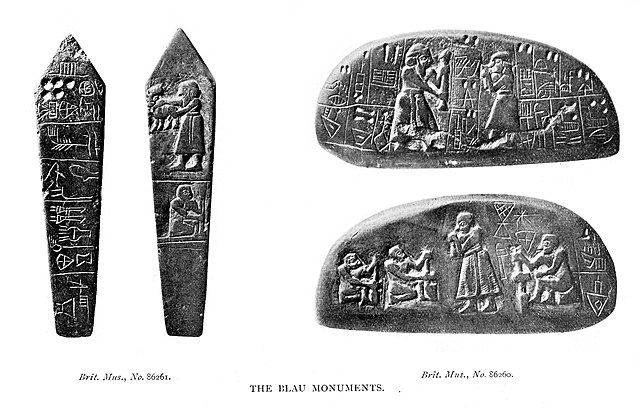So, for the sake of a production I'm working on a lot of digital artwork meant to represent a slightly-fantastic, but based in fact, representation of ancient Sumeria. Think 5000 years+ ago; dawn-of-history level. (Specifically it's a portrayal of the Enuma Elish creation story, but it needs proper suspension of disbelief. I'm willing to let some things slide, but there can't be any glaring flaws.)
I'm just about to the point that I'll be inscribing cuneiform on temple walls, and what I would like to know from fellow history buffs and historians on this forum is, what would they likely portray or be about? I specifically do not want to reference any cultural or spiritual codex which would not have existed near the very dawn of Sumeria (think foundation-of-Babylon level).
[The thing is, I realize that in reality, in the absence of a city we likely didn't actually have any temples at all, certainly not heavily organized ones. Little things like residences and agriculture tend to show up before that. So, by necessity this is going to reach into fiction slightly; and may also be a good question for World Builder's Stack Exchange.]
The culture of Sumer has, by all of my research to this moment, been rather direct about much of its terminology and tradition. Its word for "king", lugal, literally translates to "Big Man". (Yes, "Big Man" Hammurabi, father of laws. They were not being sarcastic or snarky. Let that sink in for a moment.) The ritual of Šurpa, for resolving curses of unknown origin, was basically a public apology for everything you may have screwed up in the past and a promise to do better, followed by some disposable symbolism with a little garlic or wiping with dough. (I have to admit I love these guys.) There also likely was no precedent to follow for even having temple decor; I suspect they were more like community centers.
So in the earliest temples we have record of, what was the traditional decor like? What did it portray? Before we had religion as we know it, what did people cling to spiritually?




